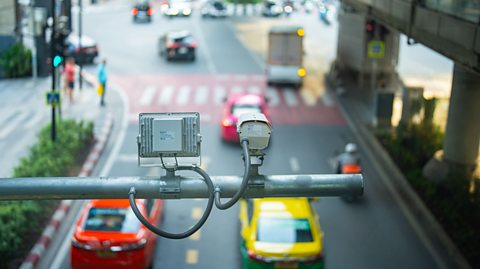Key points
- Computer control involves using computers to manage external devices like lamps, LEDs, buzzers, motors, and robotic arms.
- It enables precise and rapid control of machines and robots, with easy reprogramming for varied tasks.
- The system includes input (sensor or human data), processing/control (computer decision-making), and output (activating devices).
- Flowcharts are diagrams that illustrate control system sequences using symbols for actions like start/stop, output, decision, wait, and feedback loops.
- These systems are common in everyday devices, with flowcharts aiding in planning and visualising control sequences.
What is computer control?
Computer control means using a computer to control external devices. Examples include lamps, LEDs, buzzers, motors, and robotic arms.
A quick overview of computer control systems
In a computer control system a sequence is created that a computer can follow to achieve a desired result. These sequences are created using flow charts. For our example we are going to use a burglar alarm.
Different symbols are used to represent the different actions that can be used within the flowchart.
For example each flow chart will begin with a START symbol like this and finish with a similar STOP symbol like this.
Simple decisions with two different outcomes can also be added to the flowchart. A decision symbols is shaped like this.
In our burglar alarm system the first decision is “Has the alarm been set”. This means the flowchart will only continue once the alarm has been set, if not the flowchart will just continue to loop until the condition is met.
By linking a number of decisions together we can create sequences of instructions that allow computers to control systems in real life situations.
In our example once the alarm has been set and the motion sensors have been tripped we can see the flowchart continues and turns on the alarm. This is known as an Output and this is the symbol used to represent these.
In our example, the alarm will then continue to sound until the “Alarm code entered” decision has been satisfied. Once it has, we loop back to the beginning of the flowchart.
For certain computer control systems a certain Wait time may be required. A Wait symbol like this can be used to add in a time delay if required.
Why use computer control?
Computer control lets you control machines and robots with high accuracy and speed. They can be easily reprogrammed for different tasks.

How do computer control systems work?
Even complex systems can be understood using the systems approach.
This involves three main parts:
- Input: the system receives information from sensors or switches/human input
- Process/Control: the computer processes the input and decides what action to take
- Output: the system sends signals to activate devices like motors or lights
Flowcharts
Flowcharts are diagrams that show a sequence of events in a control system. They use symbols for different actions, such as start/stop, output, decision, wait, and feedback loops.

Start
- start is a cell that indicates the beginning of the flowchart program
- is needed start the program


Stop
- stop is a cell that signifies the end of the flowchart
- if used, the circuit would need reset to allow the program to restart again


Output
- output is a cell that sends a signal to an output device to tell it to turn on or off
- activates devices like LEDs, buzzers, or motors


Decision
- decision is a cell that makes a choice based on a condition
- directs the flowchart to different paths based on true or false conditions
- example: has a push to make (PTM) switch been pressed? Yes or no?

Simple flowchart that would allow an LED to stay on for the duration of time that the PTM switch is pressed. Once the PTM switch is released, the LED will turn off and stay that way until the PTM switch is pressed again.